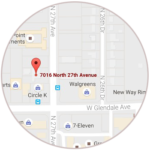
Chronic Kidney Disease (CKD) is a prevalent and challenging health condition affecting millions of people worldwide. Consequently, the search for innovative and effective therapies has led researchers to explore alternative treatment options. One of those being Hyperbaric Oxygen Therapy (HBOT). In this article, we will delve into the benefits of Hyperbaric Oxygen Therapy for Chronic Kidney Disease, supported by recent studies and clinical trials.
Understanding Chronic Kidney Disease
Over time, Chronic Kidney Disease (CKD) gradually causes a loss of kidney function. This often leads to complications such as hypertension, anemia, and bone disease. Traditional treatments aim to manage symptoms and slow disease progression, but a curative solution remains elusive.
Hyperbaric Oxygen Therapy Explained
HBOT involves breathing pure oxygen in a pressurized room or chamber. Consequently, this treatment increases the amount of oxygen in the bloodstream. This promotes healing and potentially offering benefits in various medical conditions. Additionally, the impact of HBOT on CKD has been a subject of growing interest in recent years.
Scientific Evidence Supporting Hyperbaric Oxygen Therapy for Chronic Kidney Disease
- Improved Renal Function: A study published in the “Journal of Nephrology” (2019) investigated the effects of HBOT on renal function in a rat model of CKD. Subsequently, the results demonstrated a significant improvement in kidney function parameters. This suggests a therapeutic role for HBOT in managing CKD.
- Reduced Inflammation: Inflammation is a key contributor to CKD progression. Moreover, a clinical trial published in the “International Journal of Clinical and Experimental Medicine” (2020) explored the anti-inflammatory effects of HBOT in CKD patients. The study reported a decrease in inflammatory markers, indicating that HBOT may help mitigate inflammation associated with CKD.
- Enhanced Tissue Repair: A research article in the “Journal of Translational Medicine” (2018) investigated the regenerative effects of HBOT on kidney tissue. Notably, the study found that HBOT promoted tissue repair and regeneration.
- Oxygenation of Hypoxic Tissues: CKD often leads to hypoxia, a condition where tissues receive insufficient oxygen. A review published in “Frontiers in Physiology” (2021) highlighted the role of HBOT in increasing tissue oxygenation. This effect could be particularly beneficial in CKD, where impaired oxygen delivery may contribute to disease progression.
Red Light Therapy for CKD
In addition to Hyperbaric Oxygen Therapy (HBOT), there is another powerful therapy showing promise for CKD. That therapy is… Photobiomodulation, aka Red Light Therapy (RLT)! Red light has demonstrated various biological effects, including anti-inflammatory and tissue-regenerative properties.
Recent studies have explored the potential benefits of RLT in renal health. Specifically, a study published in the “Journal of Photochemistry and Photobiology, B: Biology” (2022) investigated the effects of red light on kidney function in a CKD rat model. The findings indicated that RLT led to a reduction in oxidative stress and inflammation. Consequently, this shows a protective role for red light in mitigating CKD-related damage.
In conclusion, these results contribute to the growing body of evidence supporting the exploration of non-invasive therapies in the realm of renal health.
Get Started Today!
Hyperbaric Oxygen Therapy emerges as a promising adjunctive treatment for Chronic Kidney Disease. Furthermore, the evidence shows that HBOT offers improved renal function, reduced inflammation, enhanced tissue repair, and better oxygenation of hypoxic tissues. As research advances, the integration of HBOT and RLT into CKD treatment protocols holds the potential to revolutionize the management of this challenging condition.
Frequently Asked Questions:
The duration of the effects of HBOT can vary based on the individual’s condition and the specific goals of the therapy. In some cases, the effects of HBOT may be immediate and short-lived, while in other cases, multiple sessions of HBOT may be required to achieve longer-lasting benefits.
How often should you do hyperbaric oxygen therapy?
The frequency of HBOT sessions can vary depending on the individual’s condition, treatment goals, and the recommendation of a healthcare professional. Typically, HBOT is administered as a series of sessions. It ranges from a few to several sessions over a specified period.
How quickly does hyperbaric oxygen therapy work?
The speed at which HBOT works can vary depending on the individual’s condition and the specific goals of the therapy. Some individuals may experience immediate improvements or relief of symptoms after a few sessions of HBOT, while others may require multiple sessions over a longer period of time to see noticeable effects. The timeframe for experiencing the benefits of HBOT can be different for each person, and it is best to consult with a healthcare professional experienced in HBOT to get a better understanding of the expected timeline.
How can I find an HBOT chamber near me?
We are located in Phoenix, Arizona, but if you live far away I recommend reading my article on finding the right clinic for you.




